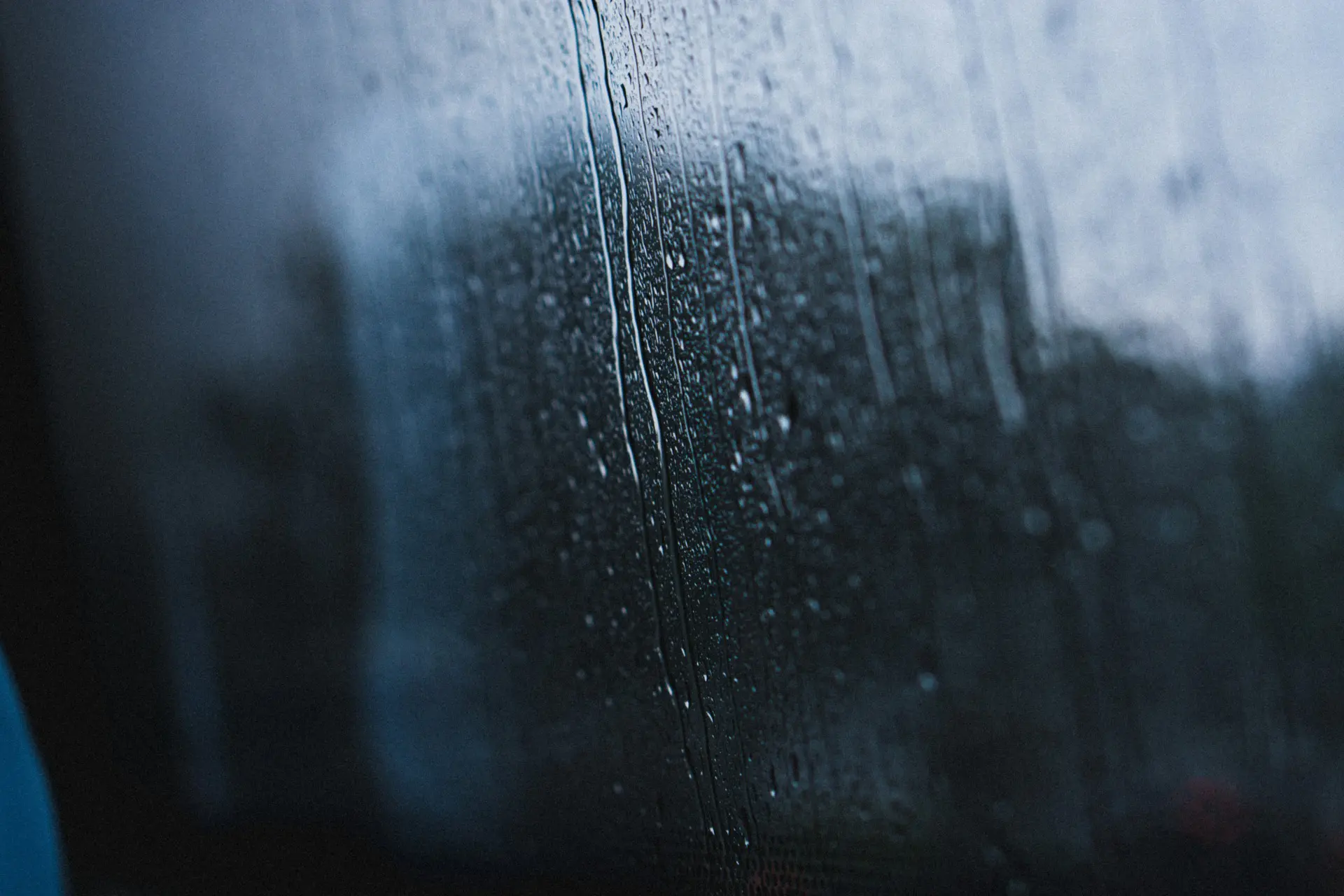Moisture can enter homes through various sources, and understanding these sources is crucial for effective prevention and management of moisture issues. Common sources include:
Get 50% OFF!
Subscribe to our newsletter and enjoy a 50% discount on all listing packages, no strings attached!

1. Daily activities: Cooking, showering, and laundry produce steam and water vapor, potentially leading to condensation on surfaces if not properly ventilated.
2. External leaks: Damaged roofs, windows, or siding can allow water intrusion from the exterior.
3. High humidity: Poor ventilation can exacerbate moisture problems, especially in humid climates.
4. Ground moisture: Capillary action can draw water from the soil into the foundation and walls, causing dampness in basements and crawl spaces.
5. Plumbing issues: Leaks from pipes or appliances like dishwashers and washing machines can contribute to moisture problems.
6. Inadequate drainage: Poor grading or clogged gutters can direct water towards the home’s foundation.
7. Construction defects: Improperly installed vapor barriers or insulation can trap moisture within walls or attics.
8. HVAC systems: Malfunctioning air conditioning units or improperly sized systems can create excess moisture.
9. Indoor plants: Overwatering or having numerous plants can increase indoor humidity levels.
10. Outdoor air infiltration: In humid climates, air entering through gaps in the building envelope can introduce moisture.
Identifying these sources allows homeowners to implement targeted strategies for controlling and managing moisture, preventing more serious issues such as mold growth, structural damage, and poor indoor air quality.
Identifying areas where moisture can enter your home
Rooftop Moisture Intrusion
One common area where moisture can enter is through the roof, especially if it is damaged or has missing shingles. Water can seep through the roof and into the attic, leading to water damage and mold growth if not addressed promptly.
Windows, Doors, and Basements
Similarly, windows and doors that are not properly sealed or have damaged weather-stripping can allow moisture to enter the home, especially during periods of heavy rain or snow. It’s important to regularly inspect these areas and make any necessary repairs to prevent moisture intrusion. Additionally, basements and crawl spaces are vulnerable areas for moisture intrusion, especially if they are not properly waterproofed or ventilated. Water can seep through cracks in the foundation or accumulate due to poor drainage, leading to dampness and mold growth.
Plumbing Fixtures and Appliances
Furthermore, plumbing fixtures and appliances such as sinks, toilets, and washing machines can also be sources of moisture intrusion if they develop leaks or are not properly maintained.
Proactive Measures
By identifying these specific areas where moisture can enter the home, homeowners can take proactive measures to prevent and manage moisture issues.
Implementing proper ventilation and air circulation
Proper ventilation and air circulation are essential for controlling moisture in the home. Without adequate ventilation, moisture from everyday activities such as cooking and showering can accumulate indoors, leading to condensation on windows, walls, and other surfaces. This can create an ideal environment for mold growth and other moisture-related problems.
To prevent this, it’s important to ensure that your home is properly ventilated, especially in areas such as kitchens, bathrooms, and laundry rooms where moisture levels are higher. One effective way to improve ventilation is by installing exhaust fans in these areas to remove excess moisture from the air. Additionally, opening windows and using ceiling fans can help improve air circulation and reduce humidity levels indoors.
In areas such as basements and crawl spaces, proper ventilation can be achieved through the installation of vents and fans to promote air flow and prevent dampness. By implementing proper ventilation and air circulation, homeowners can effectively control moisture levels in their homes and prevent potential issues such as mold growth and water damage. Furthermore, it’s important to address any areas of poor air circulation in the home, as stagnant air can contribute to moisture problems.
This can be achieved by rearranging furniture or removing obstacles that may obstruct air flow. Additionally, maintaining a consistent indoor temperature can help reduce condensation and humidity levels. By taking these steps to improve ventilation and air circulation, homeowners can create a healthier indoor environment and prevent moisture-related issues in their homes.
Utilizing dehumidifiers and moisture-absorbing materials
In addition to proper ventilation, utilizing dehumidifiers and moisture-absorbing materials can be effective in controlling moisture levels in the home. Dehumidifiers work by removing excess moisture from the air, helping to reduce humidity levels indoors. This can be especially beneficial in areas with high humidity or poor ventilation, such as basements and bathrooms.
By using a dehumidifier, homeowners can effectively control moisture levels and prevent issues such as mold growth and musty odors. Furthermore, there are various moisture-absorbing materials that can help control moisture in the home. For example, silica gel packets can be placed in closets, drawers, and other enclosed spaces to absorb excess moisture and prevent mold growth.
Additionally, using moisture-absorbing products such as desiccants or calcium chloride can help control humidity levels in specific areas of the home. By utilizing these materials, homeowners can effectively manage moisture levels and prevent potential issues in their homes. It’s important to note that while dehumidifiers and moisture-absorbing materials can be effective in controlling moisture, they should not be relied upon as a sole solution for addressing underlying moisture problems.
It’s essential to address the root causes of moisture issues in the home, such as poor ventilation or water intrusion, in addition to using these tools for managing humidity levels. By combining these strategies, homeowners can effectively control moisture levels in their homes and create a healthier indoor environment.
Inspecting and maintaining your home’s exterior to prevent moisture intrusion

Inspecting and maintaining your home’s exterior is crucial for preventing moisture intrusion and water damage. One important aspect of this is regularly inspecting the roof for any signs of damage or wear, such as missing shingles or damaged flashing. These issues can allow water to seep into the attic and walls of the home, leading to water damage and mold growth if not addressed promptly.
It’s important to make any necessary repairs to the roof to prevent potential moisture problems. Similarly, it’s important to inspect the exterior walls of the home for any signs of water damage or deterioration. This includes checking for cracks in the siding or stucco, as well as ensuring that the exterior paint is in good condition.
Any areas of damage or deterioration should be repaired promptly to prevent water intrusion and potential moisture issues. Additionally, it’s important to ensure that gutters and downspouts are clear of debris and functioning properly to effectively direct water away from the home. Furthermore, it’s important to inspect the foundation of the home for any signs of water damage or dampness.
This includes checking for cracks in the foundation or any areas where water may be accumulating due to poor drainage. Addressing these issues promptly can help prevent moisture intrusion into the basement or crawl space of the home. By regularly inspecting and maintaining your home’s exterior, you can effectively prevent moisture intrusion and potential water damage.
Addressing plumbing leaks and moisture issues promptly
Preventing Water Damage and Mold Growth
Plumbing leaks and moisture issues should be addressed promptly to prevent potential water damage and mold growth in the home. Even small leaks from pipes or fixtures can lead to significant water damage if left unattended.
Regular Inspections and Repairs
It’s important to regularly inspect plumbing fixtures for any signs of leaks or water damage, such as dampness around sinks or toilets. Any leaks should be repaired promptly to prevent further damage. Additionally, it’s important to address any signs of water damage or dampness in the home promptly, including areas of dampness on walls or ceilings, as well as musty odors that may indicate mold growth.
Identifying and Addressing Moisture Issues
It’s important to identify the source of the moisture issue and address it promptly to prevent further damage and potential health risks associated with mold growth. Furthermore, it’s important to regularly maintain plumbing fixtures and appliances such as dishwashers and washing machines to prevent potential leaks or water damage.
Maintenance and Prevention
This includes checking hoses and connections for any signs of wear or deterioration, as well as ensuring that these appliances are functioning properly. By addressing plumbing leaks and moisture issues promptly, homeowners can prevent potential water damage and mold growth in their homes.
Seeking professional assistance for severe moisture problems in your home
In some cases, severe moisture problems in the home may require professional assistance to effectively address. This includes issues such as extensive water damage from flooding or leaks, as well as significant mold growth that may pose health risks. In these situations, it’s important to seek professional assistance from a qualified contractor or restoration specialist who has experience in addressing severe moisture problems.
Professional assistance may also be necessary for addressing underlying issues such as poor ventilation or water intrusion from the exterior of the home. This may involve conducting a thorough inspection of the home to identify the root causes of moisture problems and developing a comprehensive plan for addressing these issues effectively. Additionally, professional assistance may be necessary for conducting mold remediation if significant mold growth is present in the home.
This involves safely removing mold from affected areas and addressing any underlying issues that may have contributed to its growth. By seeking professional assistance for severe moisture problems in the home, homeowners can ensure that these issues are effectively addressed and prevent further damage or health risks associated with excessive moisture and mold growth. In conclusion, understanding the sources of moisture in your home is crucial for effectively preventing and managing moisture issues.
By identifying specific areas where moisture can enter the home, implementing proper ventilation and air circulation, utilizing dehumidifiers and moisture-absorbing materials, inspecting and maintaining your home’s exterior, addressing plumbing leaks promptly, and seeking professional assistance for severe moisture problems when necessary, homeowners can effectively control moisture levels in their homes and create a healthier indoor environment for themselves and their families.





Join The Discussion